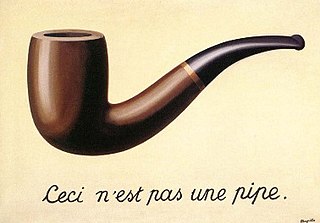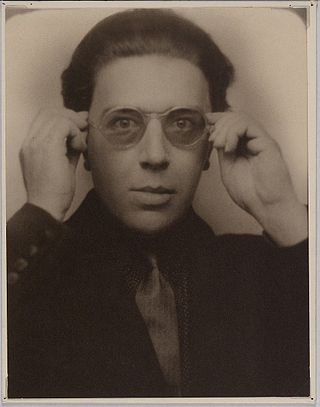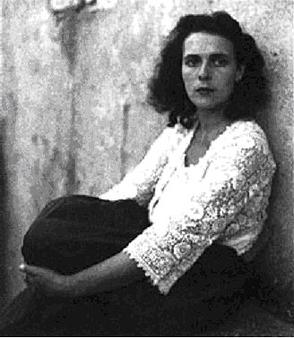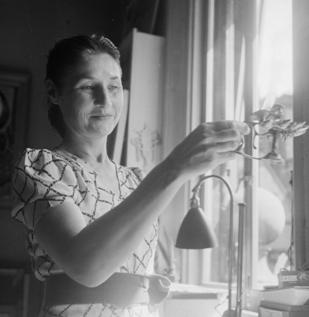Related Research Articles

Surrealism is a cultural movement that developed in Europe in the aftermath of World War I in which artists depicted unnerving, illogical scenes and developed techniques to allow the unconscious mind to express itself. Its aim was, according to leader André Breton, to "resolve the previously contradictory conditions of dream and reality into an absolute reality, a super-reality", or surreality. It produced works of painting, writing, theatre, filmmaking, photography, and other media.

André Robert Breton was a French writer and poet, the co-founder, leader, and principal theorist of surrealism. His writings include the first Surrealist Manifesto of 1924, in which he defined surrealism as "pure psychic automatism".
The Chicago Surrealist Group was founded in Chicago, Illinois, in July 1966 by Franklin Rosemont, Penelope Rosemont, Bernard Marszalek, Tor Faegre and Robert Green after a trip to Paris in 1965, during which they were in contact with André Breton. Its initial members came from far-left or anarchist backgrounds and had already participated in groups IWW and SDS; indeed, the Chicago group edited an issue of Radical America, the SDS journal, and the SDS printshop printed some of the group's first publications.

Penelope Rosemont is a visual artist, writer, publisher, and social activist who attended Lake Forest College. She has been a participant in the Surrealist Movement since 1965. With Franklin Rosemont, Bernard Marszalek, Robert Green and Tor Faegre, she established the Chicago Surrealist Group in 1966. She was in 1964-1966 a member of the Industrial Workers of the World (IWW), commonly known as the Wobblies, and was part of the national staff of Students for a Democratic Society (SDS) in 1967-68. Her influences include Andre Breton and Guy Debord of the Situationist International, Emma Goldman and Lucy Parsons.

Toyen, was a Czech painter, drafter, and illustrator and a member of the surrealist movement.

Ahmed Shawqi, nicknamed the Prince of Poets, was an Egyptian poet laureate of Kurdish origin, to the Arabic literary tradition.

Óscar M. Domínguez was a Spanish surrealist painter.

Mary Leonora Carrington was a British-born Mexican artist, surrealist painter, and novelist. She lived most of her adult life in Mexico City and was one of the last surviving participants in the surrealist movement of the 1930s. Carrington was also a founding member of the women's liberation movement in Mexico during the 1970s.
Lise Deharme was a French writer associated with the Surrealist movement.
Emma Frith Bridgwater, known as Emmy Bridgwater, was an English artist and poet associated with the Surrealist movement.

Georges Alexandre Malkine was the only visual artist named in André Breton’s 1924 Surrealist Manifesto among those who, at the time of its publication, had “performed acts of absolute surrealism." The rest Breton named were for the most part writers, including Louis Aragon, Robert Desnos, and Benjamin Peret. Malkine's 1926 painting Nuit D'amour was the precursor of the lyrical abstract school of painting.

Nancy Joyce Peters is an American publisher, writer, and co-owner with Lawrence Ferlinghetti of City Lights Books and Publishers in San Francisco until Ferlinghetti's 2021 death.

Greta Knutson or Knutson-Tzara was a Swedish modernist visual artist, art critic, short story writer and poet. A student of André Lhote who adopted Abstraction, Cubism and Surrealism, she was also noted for her interest in phenomenology. Knutson was married to Romanian-born author and co-founder of Dadaism Tristan Tzara, but they later divorced.

Women Surrealists are women artists, photographers, filmmakers and authors connected with the Surrealism movement, which began in the early 1920s.

Georges Henein (1914–1973) was an Egyptian poet and author. He was a founding member of the Cairo-based, surrealist Art and Liberty Group which brought together artists, writers and various intellectuals of different backgrounds and national origins under the shared cause of anti-fascist activism. The group was active from 1938 up until the late 1940s.
Elisa Breton, was a French artist and writer, and the third wife of the French writer and surrealist André Breton.

Valentine Penrose, was a French surrealist poet, author, and collagist.

Suzanne Césaire, born in Martinique, an overseas department of France, was a French writer, teacher, scholar, anti-colonial and feminist activist, and Surrealist. Her husband was the poet and politician Aimé Césaire.
Ikbal El Alaily was an Egyptian surrealist writer, cofounder of the journal La Part du Sable.
Nora Mitrani (1921-1961) was a Bulgarian writer, one of the most active surrealists in France in the 1950s.
References
- 1 2 Miller, Rebecca (15 September 1998). "Book reviews: Arts & humanities. Surrealist Women: An International Anthology". Library Journal. 123 (15): 80. ISSN 0363-0277.
- 1 2 3 4 5 Hinrichs, Danielle (March 1999). "In brief. Surrealist Women: An International Anthology". Women's Studies. 28 (2): 242. ISSN 0049-7878.
- 1 2 3 4 5 6 Cottenet-Hage, Madeleine (November 1999). "Book Reviews. Surrealist Women: an international anthology". Journal of Gender Studies. 8 (3): 363. doi:10.1080/095892399102625. ISSN 0958-9236.
- ↑ Lowy, Michael (July–August 1999). "Surrealism's feminine side". New Left Review (236): 128. ISSN 0028-6060.
- 1 2 3 4 5 6 Beer, Vanilla (March 2000). "Books in Brief. Surrealist Women: An International Anthology". The Art Book. 7 (2): 60. ISSN 1368-6267.
- 1 2 3 4 "Dada & Surrealism. Reviewed Work: Surrealist Women: An International Anthology by Penelope Rosemont". Woman's Art Journal. 22 (2): 60. Autumn 2001 – Winter 2002. doi:10.2307/1358944. JSTOR 1358944.